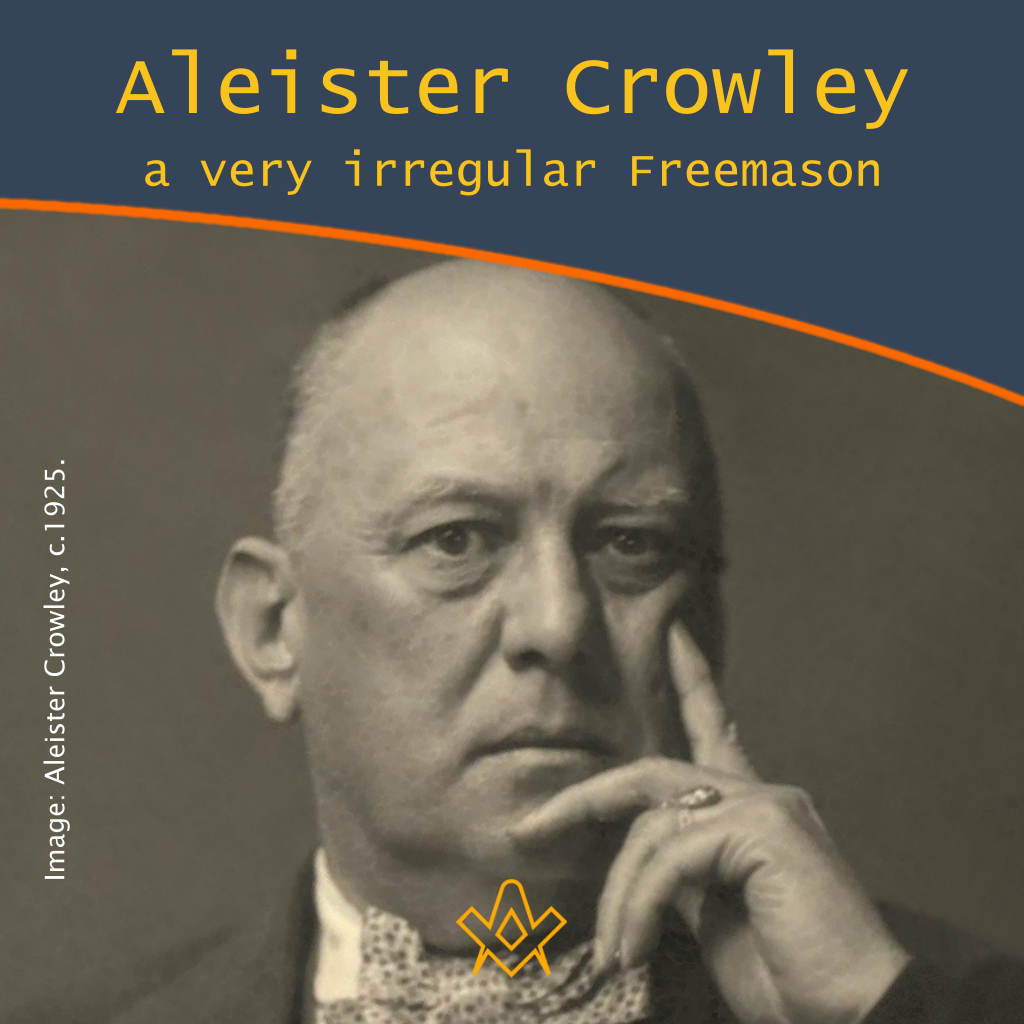The general public viewed Aleister Crowley as a potentially dangerous drug addict who practised the dark arts of black magic, was sexually immoral, and a controlling figurehead with a taste for sadism. He was frequently referred to as “The Great Beast 666”, a sobriquet that he had labelled himself with.
Aleister Crowley was born on 12 October 1875 to a wealthy brewing family living in Royal Leamington Spa, Warwickshire. He rejected his parent’s fundamentalist Christian Plymouth Brethren faith, developing instead an interest in Western Esotericism.
The reality, however, was somewhat different. He was an accomplished mountaineer who had scaled many difficult rock faces in the Lake District and wrote a guide to mountaineering.
He was the first Westerner to attempt K2, and Kanchenjunga. Both peaks were not conquered until more than 50 years after Crowley’s attempts.
He was a prolific writer about philosophy, culture, and politics, and, of course, the occult, including Thelema and “magick”, a term he invented to distinguish it from the performances of stage magicians.
At Cambridge University he read such books as A.E. Waite’s The Book of Black Magic and of Pacts (1898) and Karl von Eckartshausen’s The Cloud Upon the Sanctuary, further developing his interest in the occult.
In Switzerland, he made contact with Julian L. Baker who introduced him to the Hermetic Order of the Golden Dawn, a secret society founded in 1888, devoted to the study and practice of the occult, metaphysics, and paranormal activities during the late 19th and early 20th century.
Known as a magical order, the Hermetic Order of the Golden Dawn was active in Great Britain and focused its practices on theurgy and spiritual development.
Many present-day concepts of ritual and magic that are at the centre of contemporary traditions, such as Wicca and Thelema, were inspired by the Golden Dawn, becoming one of the largest single influences on 20th-century Western occultism.
The three founders, William Robert Woodman, William Wynn Westcott and Samuel Liddell Mathers, were Freemasons, and the two latter members of the Societas Rosicruciana in Anglia .
Westcott appears to have been the initial driving force behind the establishment of the Golden Dawn. It borrowed features from the Craft, and Royal Arch (RA), such as the sceptres used by the First and Third Principals of the RA.
Crowley was initiated by Mathers into the grade of Neophyte in the Golden Dawn’s Isis-Urania Temple at Mark Masons’ Hall on 26 November 1898.
Crowley took the magical name Frater Perdurabo, which he took to mean “I shall endure to the end”.

Crowley in Golden Dawn ‘Rites of Eleusis’ garb, 1910
IMAGE LINKED: wikimedia Attribution 4.0 International (CC BY 4.0)
Crowley took up residence at 67-69 Chancery Lane, and invited a fellow member, Alan Bennett, to join him as his personal magical tutor.
Bennett instructed Crowley in ceremonial magic, and the ritual use of drugs. Crowley progressed steadily through the earlier grades of the Golden Dawn, to the point that he could be a candidate to enter the group’s Inner Second Order.
It did not help that his bisexuality and libertine lifestyle displeased a significant section of the group. He had also become embroiled in feuds with some members of the group such as W.B. Yeats.
As a consequence, the Golden Dawn’s London Lodge refused to initiate Crowley into the Second Order. Undeterred, Crowley sought help from Mathers in Paris, who admitted him into the Adeptus Minor Grade.

[Charles Henry] Allan Bennett, Ordained in 1901 as a Bhikkhu (Buddhist monk), and received the name Ananda Metteyya.
IMAGE LINKED: wikimedia Attribution 4.0 International (CC BY 4.0)
Unfortunately, in 1900, a difference erupted in the Order between a number of Adepts and Mathers.
He denounced Westcott, claiming that he had forged correspondence with German Adepts, which had been the foundation for the establishment of the Golden Dawn.
Crowley sided with Mathers who sent him as an envoy to London to pursue the accusation of forgery against Westcott.
On 19 April 1900, Crowley arrived at 36, Blythe Road, in London, attired in Highland dress, wearing a black mask, and accompanied by Elaine Simpson. They broke into a residence, presumably with the intention of seizing the disputed documents.
A farcical court case ensued, which effectively lead to the demise of the Golden Dawn. Crowley’s participation in the affair led to his being shunned by Westcott’s associates.

Poet and Golden Dawn member, W.B. Yeats, who was present at ‘The Battle of Blythe Road’, photographed in 1903.
IMAGE LINKED: wikimedia Attribution 4.0 International (CC BY 4.0)
Acting on the advice of two of Mather’s Golden Dawn associates, Crowley set sail for Mexico in late June 1890. He had an introduction to Don Jesus Medina, a descendant of the Duke of Armada fame, and a high chief of Scottish Rite Freemasonry.
Don Medina pushed Crowley rapidly through to the 33rd Degree. However, according to Bro. John Hamill, the Order was a “miniscule irregular body”, and the 33rd Degree awarded to Crowley did not confer regular Masonic status.
Both Don Medina and Crowley were interested in ritual magick, leading them to establish The Lamp of Invisible Light with Medina as its first High Priest.
However, Crowley did not maintain contact with Medina after he left Mexico.
Furthermore, his expectation that he would be welcomed worldwide by the Masonic brethren received a rude awakening, which brought him down to Earth.
Crowley left Mexico City to travel to San Francisco where he boarded the Nippon Manu to sail to Hawaii.
On board he got involved in an affair with a married woman called Mary Alice Rogers. The relationship prompted him to write a series of poems published in 1903 as Alice: An Adultery.
His journey took him to Ceylon where he met up with Allan Bennet, who was studying Shaivism, the worship of Shiva. Eventually Bennet left for Burma to become a Buddhist monk, while Crowley went to India to practice Raja yoga at the Meenakshi Temple in Madurai.
He claimed to have reached the spiritual state of dhyana, and also wrote poetry, which was published in 1904 as The Sword of Song.
He fell ill with malaria, forcing him to recuperate in Calcutta and Rangoon. After he had recovered he was joined in India by Oscar Eckenstein and some other mountaineers.
They planned to climb the unconquered K2, but Crowley was brought down with influenza, malaria and snow blindness.
The other members of the expedition also became ill, forcing them to turn back although they had reached a very creditable 20,000 feet.

Mountaineer Oscar Eckenstein, c.1890s. Photo by Abraham Brothers. Cropped by Cullen328. – www.johngill.com
IMAGE LINKED: wikimedia Attribution 4.0 International (CC BY 4.0)
Arriving in Paris in 1902, his attempts to discuss Freemasonry, and obtain recognition, were refused by a dubious gambler because Crowley’s grip was not considered authentic.
Despite this rebuff Crowley petitioned to join the Anglo Saxon Lodge No 343, chartered by the Grand Loge de France, but not recognised by the United Grand Lodge of England.
Crowley’s petition was supported by the Reverend James Lynn Bowley, the Lodge’s Secretary. The latter had been initiated into the Apollo University Lodge No 357 in Oxford in October 1889, but resigned in 1899.
Thus, Crowley was further lead to believe that his initiation into Anglo Saxon Lodge No 343 on 8 October 1904 had secured his membership of regular Freemasonry.
He was welcomed by numerous English and American visitors. More proof, he thought misguidedly, of the regularity of his Freemasonry.

Auguste Rodin, portrait by Alphonse Legros.
IMAGE LINKED: wikimedia Attribution 4.0 International (CC BY 4.0)
While in Paris he became friendly with the sculptor Auguste Rodin, and wrote a series of poems about his work, published in 1907 as Rodin in Rime.
He moved in the same circles as W. Somerset Maugham, who used Crowley as an inspiration for Oliver Haddo, a character in his novel The Magician, published in 1908.
Crowley was also socialising with his friend and future brother-in-law, the painter Gerald Kelly. It caused quite a stir when Cowley married Gerald’s sister Rose Edith Kelly.
Her family were very annoyed about the marriage, which caused a rift in his friendship with Gerald, but did not deter the newlywed couple from travelling on honeymoon.
They arrived in Cairo in February 1904, pretending to be a prince and a princess. Crowley installed a temple room in an apartment he had rented, and began invoking ancient Egyptian deities.
Rose started to behave like a medium, advising Crowley that “they are waiting for you”. On 18 March, she revealed that the message referred to the god Horus. On 20 March, she stated that “the Equinox of the gods has come”.
She took Crowley to a local museum where she showed him a seventh century BCE offering stele called the Stele of Ankh-ef-en-Khonsu [aka the Stele of Revealing].
Crowley thought it was significant that the number of the exhibit was ‘666’, a reference to the biblical beast, and a title which Crowley relished.

Stele Cairo A 9422 (Bulaq 666), depicting Nut, Behdety as the winged solar disk, Re-Harakhty seated on his throne, and the stele’s owner, Ankh-ef-en-Khonsu i
IMAGE LINKED: wikimedia Attribution 4.0 International (CC BY 4.0)
On 8 April, Crowley claimed that he had heard a ghostly voice calling itself Aiwass, the messenger of Horus.
During the next three days Crowley wrote down everything he heard from the spectral voice. He called the work Liber al vel Legis or The Book of the Law, which declared that humanity was entering a new Aeon, with Crowley as its prophet.
The pre-eminent moral law of this Aeon would be “Do what thou will”, and it would be the whole of the law.
Crowley believed that people should live in harmony with their will. The Book of the Law became the principal text of Crowley’s religion, Thelema.
Crowley returned to Boleskine House, a property which he had purchased in 1899, and bordered the south-east side of Loch Ness.
He developed a mistrust of Mathers, believing he was using magic against him, with the result that their friendship evaporated. On 28 July 1905, Rose gave birth to their first child, a baby girl named Lilith.
Crowley founded the Society for the Propagation of Religious Truth as a vehicle for publishing his poetry.
The name was chosen as a sly dig at the Society for Promoting Christian Knowledge. Critical opinion about his poetry was divided, and it did not sell well. In an attempt to drum up interest in his work, he offered a prize of £100 for the best essay on his work.
The winner was J.F.C. Fuller, a British Army officer and military historian, whose essay The Star in the West (1907) proclaimed Crowley’s poetry as some of the best ever written.
Returning from his travels, Crowley learnt that his daughter Lilith had died from typhoid fever in Rangoon. Crowley had had short-lived romances with a number of women, but, happily, Rose gave birth to their second daughter, Lola Zaza, in February 1907.

Boleskine House, Scotland. Crowley, A. Manifesto of the M/M/M, Ballatyne Press, 1912, Page 21.
IMAGE LINKED: wikimedia Attribution 4.0 International (CC BY 4.0)
Crowley linked up with his old mentor from the Golden Dawn, George Cecil Jones. They performed the Abramelin rituals at the Ashdown Park Hotel in Coulsdon, Surrey.
These rituals were based on a system of magic taught by an Egyptian mage, Abramelin, to Abraham of Worms (1362-1458), and eventually translated by Samuel Liddell MacGregor Mathers as The Book of Sacred Magic of Abramelin the Mage.
Crowley asserted that he had achieved Samadhi, or union with the Godhead during these rituals, in which he used hashish as an aid to his mystical practices.
He also claimed to have been contacted by Aiwass again, who dictated Liber VII and Liber Cordis Cincti Serpente in October and November 1907.
These, and other texts dictated by Aiwass, were incorporated in The Holy Book of Thelema.
By this time Crowley was running short of money, so he accepted an appointment from George Montagu Bennet, the Earl of Tankerville, to protect him from witchcraft. Crowley realised that Bennet’s paranoia was a result of cocaine addiction, so he took him on holiday to France and Morocco to recuperate.
In 1907, he started to accept payment from students for instruction in occult and magical practices.
One of these students, Victor Neuberg, became a devotee and sexual partner. In 1908, they toured northern Spain, followed by a visit to Tangier.
Next year Neuberg stayed at Boleskine, where he engaged in sadomasochism with Crowley. During this period Crowley produced a number of poetical works as well as an attempt at autobiography, The World’s Tragedy.
He discovered that there was a market for short horror stories, so he wrote some himself that were published.
Possibly through his friendship with Frank Harris, the editor of Vanity Fair, he was able to get some articles published in that magazine.
He also wrote Liber 777, a book of magical and Qabalistic correspondences.

George Montagu Bennet, 7th Earl of Tankerville. Lafayette studio, London – http://lafayette.org.uk/tan3157.html
IMAGE LINKED: wikimedia Attribution 4.0 International (CC BY 4.0)
In November 1907, Crowley and Jones founded an occult Order which they intended to be a successor to the Golden Dawn.
The order was called the A∴A∴ and met in a temple located at 124 Victoria Street, in central London.
The rituals borrowed much from the Golden Dawn, as well as the teachings of Thelema. The Order attracted a number of members, including the artist Austin Osman Spare.
In March 1909, Crowley brought out a biannual periodical called The Equinox. He described the periodical as “The Review of Scientific Illuminism”, and eventually designated it as the official organ of the A∴A∴.
The name of the order is sometimes taken as Argenteum Astrum (Latin) or Astron Argon (Greek), both of which can be interpreted as ‘Silver Star’.
It was a magical organization dedicated to the advancement of humanity by perfection of the individual on every plane.
The initiations were syncretic, unifying Theravada Buddhism with Vedantic yoga and ceremonial magic.

The Equinox, Volume 1, No. 1, March 1909.
IMAGE LINKED: wikimedia Attribution 4.0 International (CC BY 4.0)
The Australian violinist Leila Waddell became Crowley’s lover, and his ‘Scarlet Woman’. Crowley decided to develop the Rites of Artemis for presentation to a wider audience by a public performance of magic and symbolism, with A∴A∴members representing various deities.
The first performance was presented at the A∴A∴ headquarters, with members of the audience given fruit punch containing peyote to enhance their experience.
Peyote is an extract from a small spineless cactus containing psychoactive alkaloids such as mescaline. It has been used for 5,500 years for medicinal use by indigenous North Americans.
Its psychoactive properties trigger rich visual or auditory effects and spiritual insights. The press and public reaction were quite positive so, in October and November 1910, Crowley decided to present theRites of Eleusis at Caxton Hall in London.
On this occasion the press responses were rather mixed, with a particularly damning review by West de Wend Fenton, the editor of The Looking Glass newspaper.
He called Crowley “one of the most blasphemous and cold-bloodied villains of modern times”.

Leila Waddell performing during the ‘Rites of Eleusis’
IMAGE LINKED: wikimedia Attribution 4.0 International (CC BY 4.0)
Crowley had intended The Equinox to reveal the real history of the Golden Dawn and its founders. He wrote to W. Wynn Westcott on 25 July 1908, demanding that Westcott deposit the cipher manuscripts, on which the Golden Dawn was founded, in the British Museum.
Crowley claimed that Westcott was an accomplice in an ongoing fraud. He followed this up with a call to Bro Arthur Cadbury-Jones, an associate of Westcott in the Societas Rosicruciana in Anglia, repeating the demand for the cipher documents to be placed in the British Museum, or specify their location if they were elsewhere.
In March 1909, an issue of The Equinox published the Second Order ritual, prompting Mathers to apply for an injunction to prevent further publication.
Crowley won the court case, and the subsequent media attention attracted more members to the A∴A∴.
The Equinox published works of literature and poetry, including Crowley’s Ambergris, The Winged Beetle, and The Scented Garden, as well as Neuburg’s The Triumph of Pan, and Ethel Archer’s The Whirlpool.
In 1911, Crowley and Waddell went on holiday to Montigny-sur-Loing where he wrote many poems, short stories, plays, works of magic and mysticism, as well as the two final Holy Books of Thelema.
Moving on to Paris, Crowley met Mary Desti, who became his next “Scarlet Lady”. They engaged in magical workings in St Moritz, and Crowley came to believe that one of the Secret Chiefs, or transcendent cosmic authorities, Abu-ul-Diz was communicating through Desti.
Using the words of Mary’s trance, Crowley wrote the two-volume Book 4 (1912-13), and introduced the word “magick”, in relation to paranormal phenomenon, to distinguish it from the stage magic of illusionists.
In 1912, Crowley published The Book of Lies, a work of mysticism applauded by the biographer Lawrence Sutin.
However, the German occultist, Theodor Reuss, accused Crowley of publishing some of the secrets of the Ordo Templi Orientis (O.T.O.), an occult Order of which he was a member.
The Order had been founded around the beginning of the 20thcentury by Carl Kellner, a wealthy Austrian industrialist.
He wanted to establish an Academia Masonica which could confer higher-grade Masonic degrees in German-speaking nations.
Later Theodor Reuss collaborated with Kellner in developing O.T.O., succeeding him as head of the Order when Kellner died in 1905.
Crowley managed to persuade Reuss that the similarities were purely coincidental, and not a deliberate transcription.

Theodor Reuss, Head of the O.T.O.
IMAGE LINKED: wikimedia Attribution 4.0 International (CC BY 4.0)
Once this difficulty had been cleared up, the two men became friends. Reuss appointed Crowley as the head of the British branch of the O.T.O., otherwise known as the Mysteria Mystica Maxima (MMM).
Crowley adopted the magical name Baphomet and was proclaimed “X˚ Supreme Rex and Sovereign Grand Master General of Ireland, Iona, and all the Britons”.
Crowley obtained Reuss’s permission to advertise the MMM and rewrote many of the O.T.O. rituals by revising the Masonic content and introducing elements of Thelema and sex magic.

Crowley in 1912.
IMAGE LINKED: wikimedia Attribution 4.0 International (CC BY 4.0)
In March 1913, Crowley acted as the producer for Waddell’s group of female violinists called The Ragged Ragtime Girls.
They performed in London’s Old Tivoli Theatre, followed by a six-week tour in Moscow.
Crowley accompanied them, and had a sadomasochistic relationship with Anny Ringler. It has been suggested that Crowley was sent to Moscow by British intelligence to spy on revolutionary elements in the city.
Crowley spent his time in Moscow writing plays and poetry, including the Gnostic Mass, a ritual for Thelema which became incorporated in the O.T.O. liturgy.
Crowley travelled to Paris with Neuberg where they performed the six-week Paris Working, using strong drugs, sex magic, and invoking the gods Mercury and Jupiter.
These rituals inspired Crowley to write Liber Agapé, a treatise on sex magic.
In 1914, Crowley sailed to the USA on board the RMS Lusitania. He managed to sustain himself by writing articles for the American edition of Vanity Fair, and by working for the well-known astrologer Evangeline Adams.
Crowley claimed he was of Irish ancestry, and, thus, a supporter of Irish independence. He began to voice support for Germany in the First World War and became involved in New York’s pro-German movement.
In January 1915, a German spy, George Sylvester Viereck, signed him up as a writer for the propaganda periodical, The Fatherland, which advocated United States neutrality during World War I.

George Sylvester Viereck, German-American poet, writer, and Nazi apologist. Photoprint by Underwood & Underwood, 1922.
IMAGE LINKED: wikimedia Attribution 4.0 International (CC BY 4.0)
Crowley travelled to various parts of America, meeting up with like-minded individuals, and performing rituals involving sex magic.
By 1918, he had arrived at Esopus Island, a wilderness retreat in the Hudson River. Here he claimed to experience past-life memories of notable individuals such as Pope Alexander VI and Alessandro Cagliostro.
Returning to New York he adopted Leah Hirsig as his next Scarlet Lady. He took up painting, exhibiting at the Greenwich Village Liberal Club.
Some sympathetic Freemasons provided the financial backing to enable Crowley to revive The Equinox, issuing volume III as The Blue Equinox.
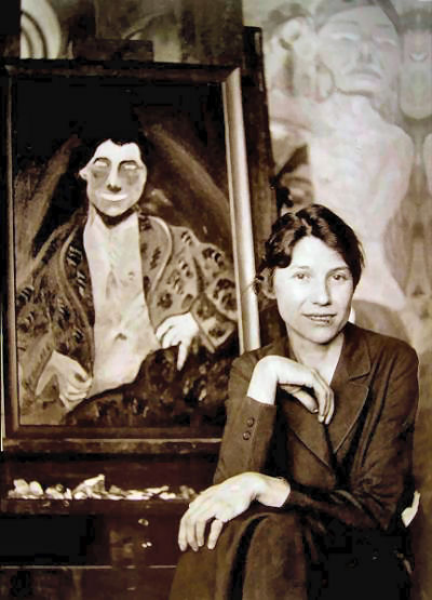
Leah Hirsig as ‘Alostrael’. Unknown author – Unknown source
IMAGE LINKED: wikimedia Attribution 4.0 International (CC BY 4.0)
In December 1919, Crowley returned to London to be met by a blast of criticism by the tabloid John Bull.
It castigated him as “traitorous scum” for his support of Germany during World War I. He resisted the temptation to sue, even though he might have claimed that he was working on behalf of British intelligence.
In January 1920, he rented a house in Fontainebleau, which he shared with Leah Hirsig, her daughter Anne “Poupée” Leah, and Ninette Shumway. He was absorbed with the idea of forming a community of Thelemites, to be called the Abbey of Thelema.
He took his inspiration from Rabelais’ satire Gargantua and Pantagruel. After consulting the I Ching, an ancient Chinese divination text, he chose Cefalù, on Sicily, as the site for his “Abbey”.
He rented the villa Santa Barbara on 2 April, and formed a commune with Hirsig, Shumway, and their children.
They wore robes and performed rituals venerating the sun god Ra, and sometimes performed the Gnostic Mass.
Crowley painted, wrote a commentary on The Book of the Law, and revised the third part of Book 4.
The children were allowed to do much as they wanted, and even witnessed acts of sex magic.
He sometimes visited rent boys in Palermo, returning with quantities of heroin, to which he became addicted. Very little attention was paid to keeping the Abbey clean: cats and dogs wandered through the building which became unsanitary.
Poupée died in October 1920, soon after which Ninette gave birth to a girl called Astarte Lulu Panthea.
More followers arrived at the Abbey, including the film star Jane Wolfe who became Crowley’s secretary.
Another arrival, Cecil Frederick Russell, argued frequently with Crowley, and expressed distaste for same-sex sexual magic rituals. He left after a year. The Australian Thelemite Frank Bennett was more prepared to go along with the rituals.

Jane Wolfe at the Abbey of Thelema in Cefalù, Italy.
IMAGE LINKED: wikimedia Attribution 4.0 International (CC BY 4.0)
He visited a Paris retreat in February 1922, in an unsuccessful attempt to throw off his heroin addiction, which had eroded his nasal cavity.
His next stop was London, where he hoped to raise money by publishing a criticism of the Dangerous Drugs Act 1920 in The English Review.
He also published a novel, Diary of a Drug Fiend, which received mixed reviews, but was castigated by the Sunday Express, which called for it to be burnt and withdrawn from publication.
Back at the Abbey, a Thelemite follower, Betty May, claimed that her husband, Raoul Loveday, had been pressurised into drinking the blood of a sacrificed cat, and that they were obliged to cut themselves with razors every time they used the pronoun “I”.
Unfortunately, Loveday drank from a polluted stream, with the result that he contracted an infection of the liver, leading to his death in February 1923.
When Betty May arrived in London she exposed the distasteful activities which she had witnessed at the Abbey.

Raoul Loveday, who died at the Abbey of Thelema in 1923.
IMAGE LINKED: wikimedia Attribution 4.0 International (CC BY 4.0)
John Bull resumed its vendetta against Crowley by describing him as “the wickedest man in the world” and “a man we would like to hang”.
Although Crowley considered a lot of the accusations against him as slanderous, he lacked the funds to take John Bull to court. Inevitably the attacks upon him continued unabated and became so widespread that they came to the notice of the Fascist dictator Benito Mussolini. Consequently, Crowley was served with a deportation notice, in April 1923 that required him to leave Italy.
Bereft of their leader, the remaining Thelemites became disheartened, and the Abbey closed.
Crowley and Hirsig went to Tunis where he began to write The Confessions of Aleister Crowley.
They were joined by the Thelemite Norman Mudd, who became his public relations consultant. In January 1924, Crowley travelled to Nice where he met Frank Harris and visited the Institute for the Harmonious Development of man, founded by the mystic and spiritual teacher George Gurdjieff.
He took Dorothy Olsen, a follower, to Tunisia for a magical retreat in Nefta. Here he wrote To Man, which proclaimed his status a prophet entrusted with bringing Thelema to mankind.
In early 1925, Crowley and Olsen returned to Tunis from a winter spent in Paris. In the same year Crowley wrote The Heart of the Master, which described a vision he had had whilst in a trance.
In March, Olsen became pregnant, and Hirsig was summoned to look after her, but she miscarried.
Crowley then took Olsen back to France. Hirsig was becoming disenchanted with Crowley, having written in her diary: “his rasping voice so jarred me that I wanted to scream”. Eventually Hirsig rejected Crowley’s claim to be a prophet but maintained her belief in the Law of Thelema.
In January 1932 Crowley took in the communist, Gerald Hamilton, as a lodger. He introduced Crowley to many individuals within the Berlin far left.
It is possible that Crowley was acting as a spy for British intelligence in order to monitor the activities of the local communist movement.
At the outbreak of World War II, Crowley’s offer to work for the Naval Intelligence Division was declined.
Nevertheless, he mixed with members of the British intelligence community such as Dennis Wheatley, Roald Dahl, Ian Fleming, and Maxwell Knight.
At the onset of the London Blitz Crowley relocated to Torquay, where he was hospitalized with asthma.
On returning to London, he was contacted by the American Thelemite, Grady McMurty. Crowley awarded him the title “Hymenaes Alpha” and declared that McMurty should succeed Germer as head of the German O.T.O. following the latter’s death.
Crowley planned to design a set of Tarot cards to accompany a book, The Book of Thoth, to be published in a limited edition.
He aided the war effort by publishing Liber Oz, affirming the rights of humanity, and a patriotic poem Le Gauloise, supporting the Free French.
His final publication was a book of poetry, Olla: An Anthology of Sixty Years of Song. Magick Without Tears was published posthumously.
He eventually moved to Hastings to reside at the Netherwood boarding house. Among the various people he met during this period was Gerald Gardner, the future founder of Gardnerian Wicca. Crowley authorised Gardner to revive the O.T.O. in Britain.
On 1 December 1947, Crowley died at Netherwood, suffering from chronic bronchitis, pleurisy, and myocardial degeneration.
He was seventy-two. His funeral was held on 5 December at a Brighton crematorium. Only a dozen people attended, with the author Louis Wilkinson reading extracts from the Gnostic Mass and Crowley’s sacrilegious poem Hymn of Pan.
The tabloid press labelled the funeral a Black Mass. Crowley’s ashes were sent to Karl Germer in America, who buried them in his garden at Hampton, New Jersey.

Writer and Poet Louis Wilkinson, Contemporary Portraits by Frank Harris, published by the author, New York 1920.
IMAGE LINKED: wikimedia Attribution 4.0 International (CC BY 4.0)
Aleister Crowley was a complex character with a capacity for provoking controversy about his beliefs and behaviour.
No doubt, occultists will applaud him as a pioneer in reviving Western esotericism. Crowley considered himself a Freemason, even though he had been initiated into an irregular Lodge.
He was a formidable author, producing at least seventy literary works that can be credited to him. His poetry has received critical acclaim, and his short stories have been commended by a number of critics.
He created the religion of Thelema with the central tenet of “Do what thou will which shall be the whole of the Law”, derived from the Greek word ‘Thelema’, meaning will.
Crowley claimed that this was the first principle of the Aeon of Horus. Thus, every Thelemite must find their individual True Will, discover what the inner divine self desires, and follow that path.
Modern Thelema is a syncretic philosophy and religion, and many Thelemites try to avoid strongly dogmatic or fundamentalist thinking.
Thus, contemporary Thelemites may practice more than one religion, including Discordianism, Wicca, and Gnosticism.
The last decade has seen the development of scholarly interest in Crowley with the publication of books such as Aleister Crowley and Western Esotericisms (2012) edited by Henrik Bogdan and Martin P. Starr, and Rethinking Aleister Crowley and Thelema (2020) edited by Manon Hedenborg White.
Text source: Wikipedia contributors. (2022, July 12). Aleister Crowley.
In Wikipedia, The Free Encyclopedia. Retrieved 14:49, July 21, 2022, from https://en.wikipedia.org/w/index.php?title=Aleister_Crowley&oldid=1097675576
Article by: Nigel Wade

Educated at The Stationers’ Company's School, and the University of London.
A regular writer for the school magazine and ‘The Old Stationer’; member of the Brentwood Writers’ Circle.
Nigel has written one children's book ‘City Fox’, and various articles for ‘The Square Magazine’.

Books by Aleister Crowley
Aleister Crowley (/ˈkroʊli/; born Edward Alexander Crowley; 12 October 1875 – 1 December 1947) was an English occultist, ceremonial magician, poet, painter, novelist, and mountaineer.
He founded the religion and philosophy of Thelema, identifying himself as the prophet entrusted with guiding humanity into the Æon of Horus in the early 20th century.

Aleister Crowley and Western Esotericisms
Edited by Henrik Bogdan and Martin P. Starr
This volume is the first comprehensive examination of one of the twentieth century’s most distinctive iconoclasts. Aleister Crowley (1875-1947) was a study in contradictions.
Born into a fundamentalist Christian family and educated at Cambridge, he was vilified as a traitor, drug addict, and debaucher, yet revered as perhaps the most influential thinker in contemporary esotericism.
Moving beyond the influence of contemporary psychology and the modernist understanding of the occult, Crowley declared himself the revelator of a new age of individualism.
Crowley’s occult bricolage, Magick, was an eclectic combination of spiritual exercises drawn from Western European magical ceremonies and Indic sources for meditation and yoga.
This journey of self-liberation culminated in harnessing sexual power as a magical discipline, a “sacrilization of the self” as practiced in Crowley’s mixed masonic group, the Ordo Templi Orientis.
The religion Crowley created, Thelema, legitimated his role as a charismatic revelator and herald of a new age of freedom.
Aleister Crowley’s lasting influence can be seen in the counter-culture movement of the late 1960s and early 1970s and in many forms of alternative spirituality and popular culture.
The essays in this volume offer crucial insight into Crowley’s foundational role in the study of Western esotericism, new religious movements, and sexuality.

Aleister Crowley: Magick, Rock and Roll, and the Wickedest Man in the World
By: Gary Lachman
When Aleister Crowley died in 1947, he was not an obvious contender for the most enduring pop-culture figure of the next century.
But twenty years later, Crowley’s name and image were everywhere. The Beatles put him on the cover of Sgt. Pepper’s Lonely Hearts Club Band.
The Rolling Stones were briefly serious devotees. Today, his visage hangs in goth clubs, occult temples, and college dorm rooms, and his methods of ceremonial magick animate the passions of myriad occultists and spiritual seekers.
Aleister Crowley is more than just a biography of this compelling, controversial, and divisive figure—it’s also a portrait of his unparalleled influence on modern pop culture.
Recent Articles: in people series
 Celebrate the extraordinary legacy of The Marquis de La Fayette with C.F. William Maurer's insightful exploration of Lafayette's 1824-25 tour of America. Discover how this revered leader and Freemason was honored by a young nation eager to showcase its growth and pay tribute to a hero of the American Revolution. |
 Albert Mackey and the Civil War In the midst of the Civil War's darkness, Dr. Albert G. Mackey, a devoted Freemason, shone a light of brotherhood and peace. Despite the nation's divide, Mackey tirelessly advocated for unity and compassion, embodying Freemasonry's highest ideals—fraternal love and mutual aid. His actions remind us that even in dire times, humanity's best qualities can prevail. |
 Discover the enduring bond of brotherhood at Lodge Dumfries Kilwinning No. 53, Scotland's oldest Masonic lodge with rich historical roots and cultural ties to poet Robert Burns. Experience rituals steeped in tradition, fostering unity and shared values, proving Freemasonry's timeless relevance in bridging cultural and global divides. Embrace the spirit of universal fraternity. |
 Discover the profound connections between John Ruskin's architectural philosophies and Freemasonry's symbolic principles. Delve into a world where craftsmanship, morality, and beauty intertwine, revealing timeless values that transcend individual ideas. Explore how these parallels enrich our understanding of cultural history, urging us to appreciate the deep impacts of architectural symbolism on society’s moral fabric. |
 Discover the incredible tale of the Taxil Hoax: a stunning testament to human gullibility. Unmasked by its mastermind, Leo Taxil, this elaborate scheme shook the world by fusing Freemasonry with diabolical plots, all crafted from lies. Dive into a story of deception that highlights our capacity for belief and the astonishing extents of our credulity. A reminder – question everything. |
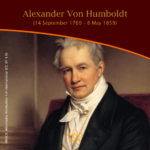 Dive into the extraordinary legacy of Alexander Von Humboldt, an intrepid explorer who defied boundaries to quench his insatiable thirst for knowledge. Embarking on a perilous five-year journey, Humboldt unveiled the Earth’s secrets, laying the foundation for modern conservationism. Discover his timeless impact on science and the spirit of exploration. |
 Voltaire - Freethinker and Freemason Discover the intriguing connection between the Enlightenment genius, Voltaire, and his association with Freemasonry in his final days. Unveil how his initiation into this secretive organization aligned with his lifelong pursuit of knowledge, civil liberties, and societal progress. Explore a captivating facet of Voltaire's remarkable legacy. |
 Robert Burns; But not as we know him A controversial subject but one that needs addressing. Robert Burns has not only been tarred with the presentism brush of being associated with slavery, but more scaldingly accused of being a rapist - a 'Weinstein sex pest' of his age. |
 Richard Parsons, 1st Earl of Rosse Discover the captivating story of Richard Parsons, 1st Earl of Rosse, the First Grand Master of Grand Lodge of Ireland, as we explore his rise to nobility, scandalous affiliations, and lasting legacy in 18th-century Irish history. Uncover the hidden secrets of this influential figure and delve into his intriguing associations and personal life. |
 James Gibbs St. Mary-Le-Strand Church Ricky Pound examines the mysterious carvings etched into the wall at St Mary-Le-Strand Church in the heart of London - are they just stonemasons' marks or a Freemason’s legacy? |
 Freemasonry and the Royal Family In the annals of British history, Freemasonry occupies a distinctive place. This centuries-old society, cloaked in symbolism and known for its masonic rituals, has intertwined with the British Royal Family in fascinating ways. The relationship between Freemasonry and the Royal Family is as complex as it is enduring, a melding of tradition, power, and mystery that continues to captivate the public imagination. |
 A Man Of High Ideals: Kenneth Wilson MA A biography of Kenneth Wilson, his life at Wellington College, and freemasonry in New Zealand by W. Bro Geoff Davies PGD and Rhys Davies |
 In 1786, intending to emigrate to Jamaica, Robert Burns wrote one of his finest poetical pieces – a poignant Farewell to Freemasonry that he wrote for his Brethren of St. James's Lodge, Tarbolton. |
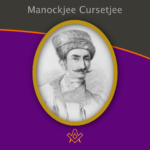 Alex Lishanin explores Mumbai and discovers the story of Lodge Rising Star of Western India and Manockjee Cursetjee – the first Indian to enter the Masonic Brotherhood of India. |
 Aleister Crowley - a very irregular Freemason Aleister Crowley, although made a Freemason in France, held a desire to be recognised as a 'regular' Freemason within the jurisdiction of UGLE – a goal that was never achieved. |
 Sir Joseph Banks – The botanical Freemason Banks was also the first Freemason to set foot in Australia, who was at the time, on a combined Royal Navy & Royal Society scientific expedition to the South Pacific Ocean on HMS Endeavour led by Captain James Cook. |
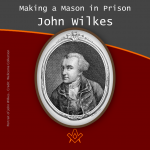 Making a Mason in Prison: the John Wilkes’ exception? |
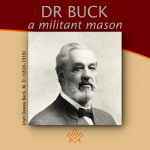 "To be a good man and true" is the first great lesson a man should learn, and over 40 years of being just that in example, Dr Buck won the right to lay down the precept. |
 Elias Ashmole: Masonic Hero or Scheming Chancer? The debate is on! Two eminent Masonic scholars go head to head: Yasha Beresiner proposes that Elias Ashmole was 'a Masonic hero', whereas Robert Lomas posits that Ashmole was a 'scheming chancer'. |
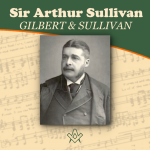 Sir Arthur Sullivan - A Masonic Composer We are all familiar with the comic operas of Gilbert and Sullivan, but did you know Sullivan was a Freemason, lets find out more…. |
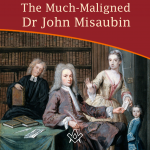 The Much-Maligned Dr John Misaubin The reputation of the Huguenot Freemason, has been buffeted by waves of criticism for the best part of three hundred years. |
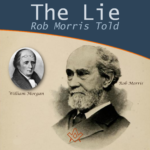 Was William Morgan really murdered by Masons in 1826? And what was the lie Masonic author Rob Morris told? Find out more in the intriguing story of 'The Morgan Affair'. |
 Lived Respected - Died Regretted Lived Respected - Died Regretted: a tribute to HRH The Prince Philip, Duke of Edinburgh |
 Who was Moses Jacob Ezekiel, a Freemason, American Civil War Soldier, renowned sculptor ? |
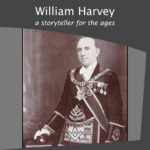 A Masonic author and Provincial Grand Master of Forfarshire in Scotland |
 Who was Philip, Duke of Wharton and was he Freemasonry’s Loose Cannon Ball ? |
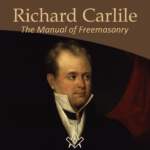 Richard Carlile - The Manual of Freemasonry Will the real author behind The Manual of Freemasonry please stand up! |
 Nicholas Hawksmoor – the ‘Devil’s Architect’ Nicholas Hawksmoor was one of the 18th century’s most prolific architects |
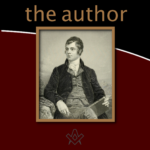 By Bro. Anthony Oneal Haye (1838-1877), Past Poet Laureate, Lodge Canongate Kilwinning No. 2, Edinburgh. |
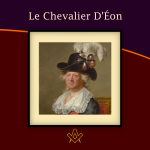 The Curious Case of the Chevalier d’Éon A cross-dressing author, diplomat, soldier and spy, the Le Chevalier D'Éon, a man who passed as a woman, became a legend in his own lifetime. |
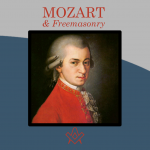 Mozart Freemasonry and The Magic Flute. Rev'd Dr Peter Mullen provides a historical view on the interesting topics |
masonic knowledge
to be a better citizen of the world
share the square with two brothers

click image to open email app on mobile device


